At the Small Reach Regatta in Maine, we host some 70 oar-and-sail boats, and have a number of support boats, all in an area well away from Coast Guard or other emergency support. So, we require everyone to carry a VHF. The boats range from 13′ to 20′, have a wide variety of sailing rigs, and don’t all get underway at the same time, so the fleet spreads out over many miles. It has been a challenge to communicate with everyone and to get a message from the front of the fleet to the rear.
VHF radios, like cell phones, are limited to line of sight. The Coast Guard sets its antennas up as high as possible, often in spots remote from their base, to cover a wide area. The range, or “radio horizon,” for a handheld VHF in a small boat could be as little as 2.5 miles if the user is seated, with the radio only about 4′ off the water. If you are trying to communicate with another handheld, 5 miles might be your outer limit.
A second limit is set by the way we use VHFs. In simple terms, your signal radiates out in a plane perpendicular to the antenna. If you angle your VHF, that signal plane tilts too, and may be over some recipients or fall short of others. It may be degraded further if your recipient’s plane is not aligned with yours. So, handheld VHFs work better held vertically.
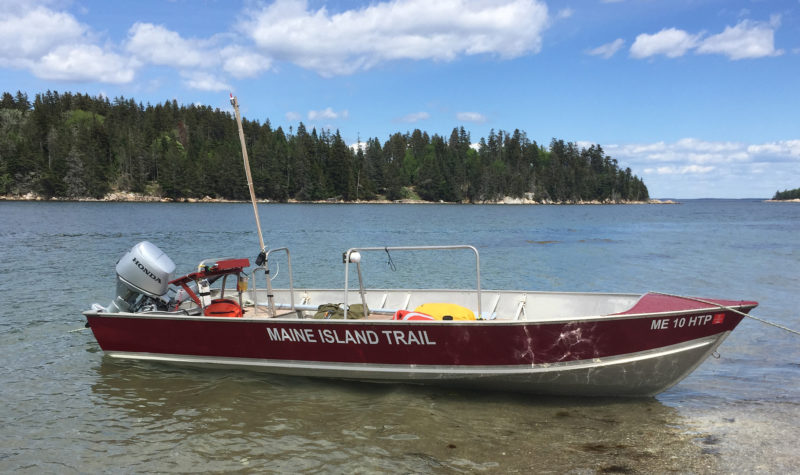 Photographs by the author
Photographs by the authorThis MITA work skiff, used as a regatta chase boat, is rigged with an antenna on a pole to better reach all of the boats in the event fleet.
Larger boats put antennas on top of deckhouses or masts to increase their VHF range: a height of 9’ would reach someone 7 miles away with a handheld VHF in a small boat; 16′ would reach them 9 miles away. As a sometimes driver of a Maine Island Trail Association (MITA) chase boat, I started thinking about how to connect a taller antenna to my handheld VHF. It was pretty simple. I had a handy 8′ pole, and bought a simple whip antenna which promised a 3Db gain, doubling my effective output power. A length of coaxial connects the antenna to the radio.
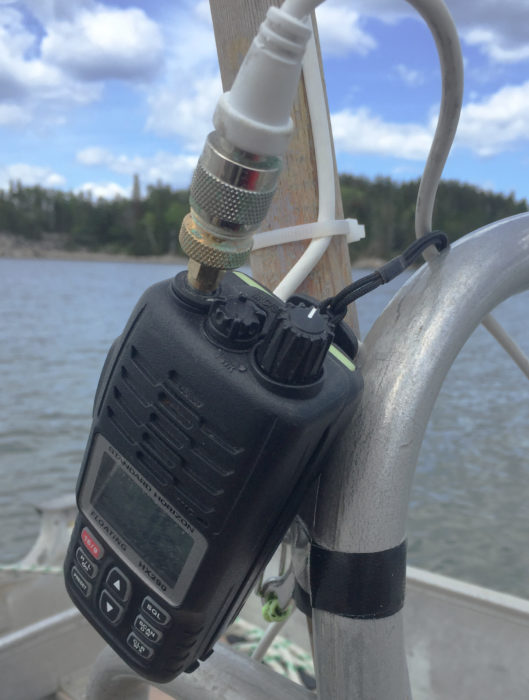
The handheld VHF, with its antenna removed, accepts an adapter to the coaxial cable that is connected to the elevated antenna.
Only some handheld VHFs will connect to coaxial cable. You can tell if yours can when you unscrew the antenna and find a small coaxial fitting. To connect the cable to the radio, you will need an adapter—one end to fit your VHF and the other to fit a PL-259 plug on the end of an RG-58 coaxial cable. I bought a cable long enough to run down the pole and allow me to operate the VHF while at the helm or pass it to a crew member.
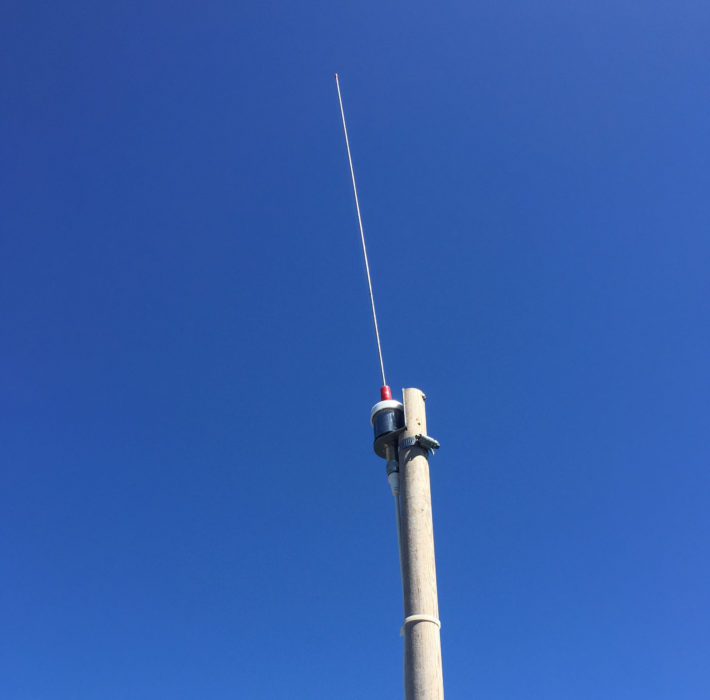
The MITA skiff uses a pole secured to the console to raise the accessory antenna.
With the antenna up at 9′, I could be at the front or the rear of the widespread regatta fleet and everyone could hear me. Problem solved.
If you are in areas frequented by other boaters, the antenna on your handheld will be fine. Your communications will improve if you can stand and hold the unit upright. But if you are off the beaten path, a fixed antenna, elevated on a mast or a dedicated pole, could help. ![]()
Ben Fuller, curator of the Penobscot Marine Museum in Searsport, Maine, has been messing about in small boats for a very long time. He is owned by a dozen or more boats ranging from an International Canoe to a faering.
You can share your tips and tricks of the trade with other Small Boats Magazine readers by sending us an email.
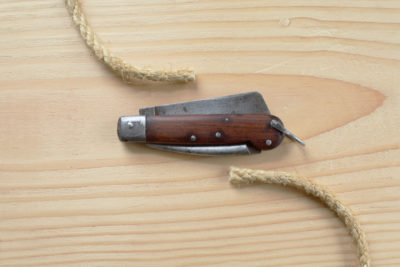
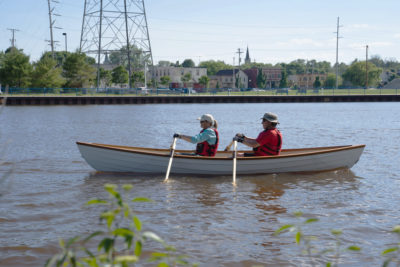
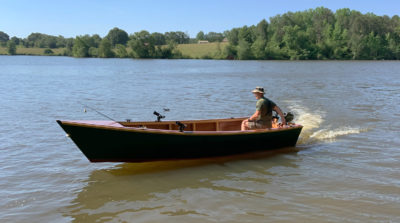
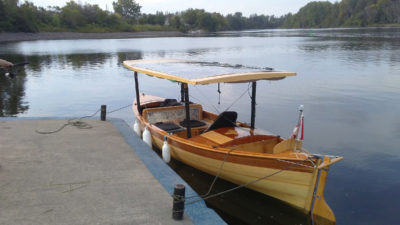
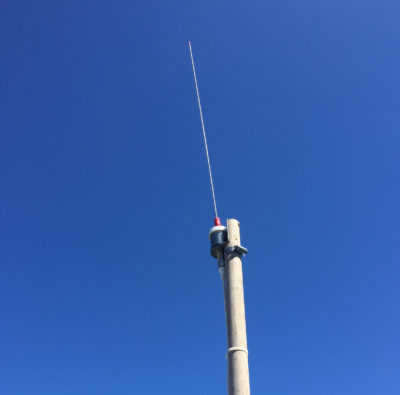
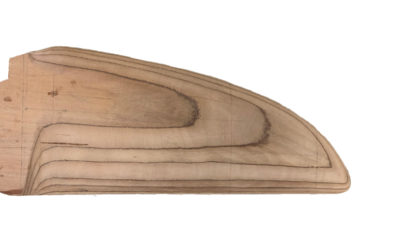
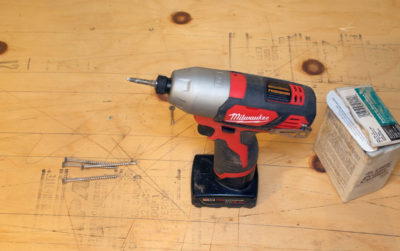
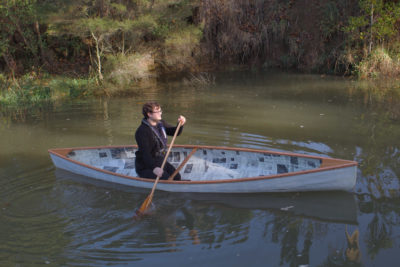
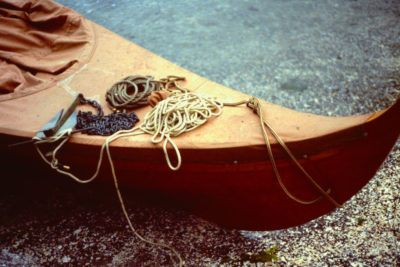
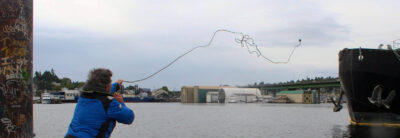
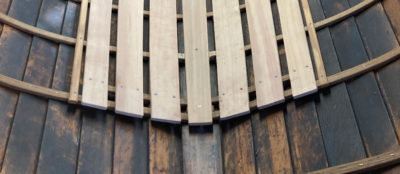
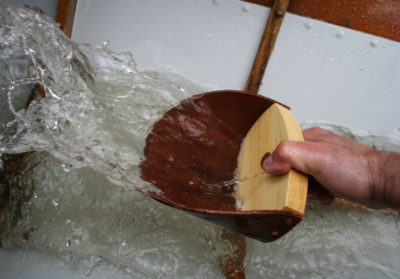
What is the HP size on the Honda engine? I assume the Lund is an 18′.
We featured MITA’s work boats in the article “Torngat,” in our July 2018 issue. The boats are identified as Lund SSV-18s and the power for the skiffs are 60-hp, tiller-steered Hondas.
Editor
The Lund’s do max out at 60 or so, but we find for the working skiff that a Honda 30 is just fine. 19 knots solo in flat water, 17 with a couple of people aboard.
Interesting article. I would probably extend it little bit more about the proper sizing of antenna. The higher gain is not always desirable in some cases.
There are two things that come into play when designing an antenna’s gain and power. The power is what your device is able to produce, and you are not able play with (even legislation restrictions are in place, not sure how in USA). The second is gain, where many people think that having the antenna with biggest gain is the best. But gain is defined how well the antenna points in some directions compared to full spherical transmission. It could be easily described as like a telescope: when you zoom in a lot, you will see a very detailed picture, but need to aim it well; if you zoom out, you will see much broader, but with less detail.
So a boat with minimum roll being nearly upright all the time can use antenna with high gain (and a low transmission angle). On the other side, sailboats and the like that roll much more may find antenna with high gain worse than one with lower gain, because the transmission angle would be simply overwhelmed by the roll. Luckily sailboats can place the antenna much higher than motor boats so less gain may not be an issue.
This is also why even the small antennas on the headset needs to be properly pointed (upward), because of some nonzero gain and directional like some fat donut (spherical transmission is only theoretical, there are always places where antenna transmit worse).
I would like to know what to connect the coaxial cable screen to at the top of my yachts mast.
It will obviously be connected to the outer body of coaxial connector that plugs into the mast top VHF antenna.
If the base of the antenna is attached to the aluminium mast via a metallic bracket & the base of the antenna is connected to the outer body of the coaxial connector, then the mast could act as ground plan for the antenna. I’m not sure if this is desirable because most marine VHF antennas don’t require a ground plan.
Maybe the base of the antenna is insulated from the outer body of the coaxial connector & the antenna base is insulated from the metallic fixing bracket at the top of the mast.
Can you comment on this?
Regards,
Paul
As far as I know, and I’ve not dealt with an aluminum mast there is no insulation between the antenna bracket and the mast. Not sure about what you are asking about the coax; the coax fitting just screws into the antenna. The outer “screen” is soldered ( at least that’s what I used to do) to the outer part of the coax fitting. So any insulation is built in, between the antenna and the bracket.